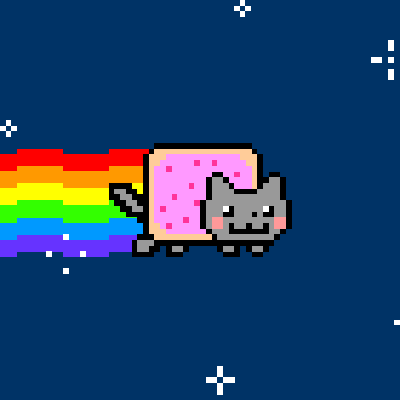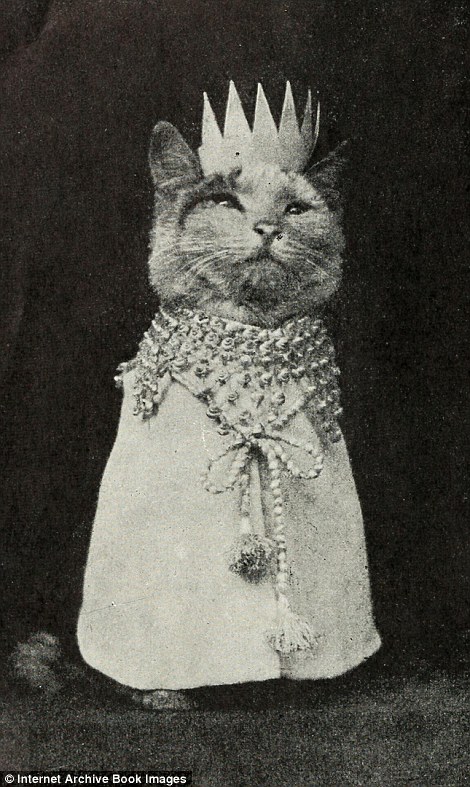
Image Credit: "Nyan Cat-Pop Tart Cat," by Chris Torres
Last week, my neighbor stopped by to tell me that he was moving, and that pets were not allowed at his new residence. With all due histrionics, he lamented the fact that he was going to take her to the shelter, and that “unless anybody here wants to adopt her, [insert overly dramatic sigh] I guess she’ll probably be put down.”
My manipulative neighbor was playing me like a fiddle. He knew I had a soft spot for that cat; hell, I was the one to feed her on multiple occasions when her deadbeat dad couldn't be bothered to do so. The cat liked me, too. Whenever she’d enter my apartment, she’d survey her surroundings and then proceed to scratch the side of my couch like it was her job. I’d tell her to knock it off, and she would, but not without looking at me with what I swear was a bit of amusement.
When I realized that Violet had already moved my (generally) rational thinking into the land of the Pathetic Fallacy, I tried to take solace in the knowledge that I wasn’t the only one. And while I can’t fathom ever creating cat memes myself, it would be foolish to underestimate the power that felines have had over the human photographer since there were photos to take. Aside from the comedic or cuteness factors, publishing cat memes has always been a lucrative endeavor.
Around 1900, author Osgood Grover sold millions of books, one of which was 1911’s “Kittens and Cats: A Book of Tales (hyperlink below)” The image below is just one example of the many pictures of costumed cats. Many of these pictures are even replete with “quotes” of the internal monologue of the pictured cat, just as we see in the typical meme of the digital age.
 Image Credit: Dan Bloom http://dailymail.co.uk
Image Credit: Dan Bloom http://dailymail.co.uk
Over 100 years later, cat books are still where the money is at. In his New York Times Op-Talk interview last month (“Confessions of A Cat Guy”), author and illustrator Peter Catapano described what is known in the publishing industry as “going cat book.” Catapano says that brilliant authors that tire of having brilliant books overlooked can get rich from publishing an identical book, except with pictures of cats throughout it, “because people will buy literally anything with a cat on it.”
So, it would appear as the cat meme was here decades before us, and there’s no reason to think that they won’t be as popular as ever after we all shuffle off this mortal coil, perhaps it’s time to do away with what Catapano calls the “rueful resignation” that accompanies “becom[ing] the sort of person you had always ridiculed- in this case, a Cat Guy?” it seems high time that even those who don’t count themselves among the “Cat People” finally accept- and even learn from- what these cats and their people are trying to tell us.

 Image Credit: Dan Bloom
Image Credit: Dan Bloom
Recent comments
2 years 29 weeks ago
2 years 44 weeks ago
2 years 44 weeks ago
2 years 50 weeks ago
3 years 4 weeks ago
3 years 4 weeks ago
3 years 4 weeks ago
3 years 6 weeks ago
3 years 6 weeks ago
3 years 6 weeks ago